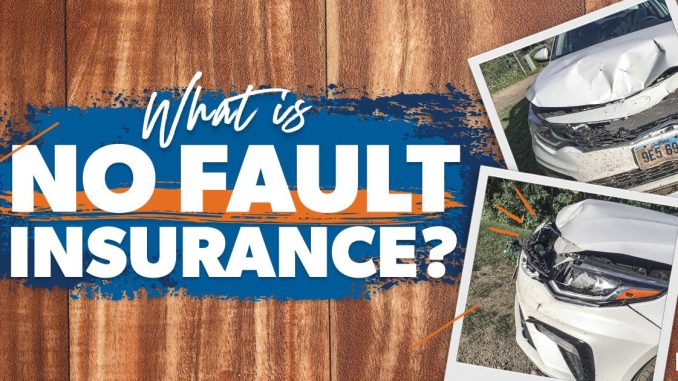
No-fault insurance is one of those terms that sounds straightforward but often leads to confusion. At first glance, it suggests a system where no one is blamed for an accident, and everyone simply moves on. In reality, no-fault insurance refers to a specific legal framework that governs how claims are handled after a car accident, and it varies significantly from state to state. Understanding what no-fault insurance actually means—and what it doesn’t—can help drivers make informed decisions about coverage and avoid surprises when filing a claim.
In a traditional fault-based system, the driver who caused the accident is responsible for paying the damages, typically through their liability insurance. This includes medical expenses, property damage, and other related costs. The process often involves investigations, negotiations, and sometimes litigation to determine who was at fault. No-fault insurance, by contrast, is designed to streamline this process by allowing each driver to turn to their own insurance company for coverage, regardless of who caused the accident. The primary goal is to reduce delays and legal disputes, especially when it comes to medical claims.
Under a no-fault system, drivers carry personal injury protection, or PIP, which covers medical expenses, lost wages, and other out-of-pocket costs resulting from an accident. This coverage kicks in immediately, without the need to establish fault. For example, if you’re injured in a collision, your PIP coverage will pay for your treatment up to the policy limits, even if the other driver ran a red light. This can be particularly beneficial in situations where quick access to care is essential and waiting for a liability determination would be impractical. It also helps reduce the burden on courts by minimizing the number of lawsuits related to minor injuries.
However, no-fault insurance doesn’t mean that fault is irrelevant. Property damage, for instance, is typically still handled through the at-fault driver’s liability coverage. If someone crashes into your parked car, you’ll likely need to file a claim with their insurer to cover the repairs. Additionally, serious injuries may fall outside the scope of no-fault rules. Most no-fault states have thresholds—either monetary or based on the severity of the injury—that allow victims to pursue legal action against the at-fault driver once those limits are exceeded. This means that while minor injuries are handled through PIP, more significant cases can still lead to lawsuits and fault-based claims.
Another common misconception is that no-fault insurance is universally available or required. In the United States, only a handful of states operate under a true no-fault system, and each has its own rules and nuances. States like Florida, Michigan, and New York have long-standing no-fault laws, while others have experimented with the model and later abandoned it. Drivers moving between states or purchasing coverage in unfamiliar jurisdictions need to be aware of these differences. What qualifies as no-fault in one state may look very different in another, and the coverage requirements can vary widely.
Cost is another factor that complicates the picture. While no-fault insurance aims to reduce litigation and administrative expenses, it doesn’t always lead to lower premiums. In some states, the cost of PIP coverage has risen due to high medical claims and fraud. Michigan, for example, has historically had some of the highest auto insurance rates in the country, partly due to its generous no-fault benefits. Reforms have been introduced to address these issues, but the balance between comprehensive coverage and affordability remains a challenge. Drivers should carefully review their policy options and understand what’s included in their PIP coverage, as well as any deductibles or limitations.
No-fault insurance also influences how insurers handle claims and customer service. Because each company is responsible for its own policyholders’ medical expenses, there’s a greater emphasis on internal claims processing and cost control. This can lead to faster payouts but also stricter scrutiny of medical treatments and billing. Policyholders may find themselves navigating complex paperwork or dealing with disputes over what constitutes necessary care. Having a clear understanding of your coverage and maintaining thorough documentation can help ensure that your claims are processed smoothly.
For businesses and fleet operators, no-fault insurance presents both opportunities and challenges. On one hand, it simplifies claims management and reduces the risk of litigation for minor incidents. On the other hand, it requires careful coordination of benefits and may necessitate additional coverage to protect against serious liability. Commercial policies often include broader protections, but understanding how no-fault rules apply to employees or contractors is essential. A delivery company operating in a no-fault state, for example, must ensure that its drivers are adequately covered and that claims are handled efficiently to avoid disruptions.
Ultimately, the truth about no-fault insurance is that it’s not a one-size-fits-all solution. It offers clear advantages in terms of speed and simplicity, especially for minor injuries, but it also comes with limitations and complexities that require attention. Drivers should view no-fault coverage as one component of a comprehensive insurance strategy, not a substitute for understanding liability, property damage, and legal rights. By taking the time to learn how no-fault systems work and how they interact with other forms of coverage, policyholders can make smarter choices and be better prepared when accidents happen. In a world where clarity and speed matter, no-fault insurance provides a valuable tool—but only when used with full awareness of its scope and implications.